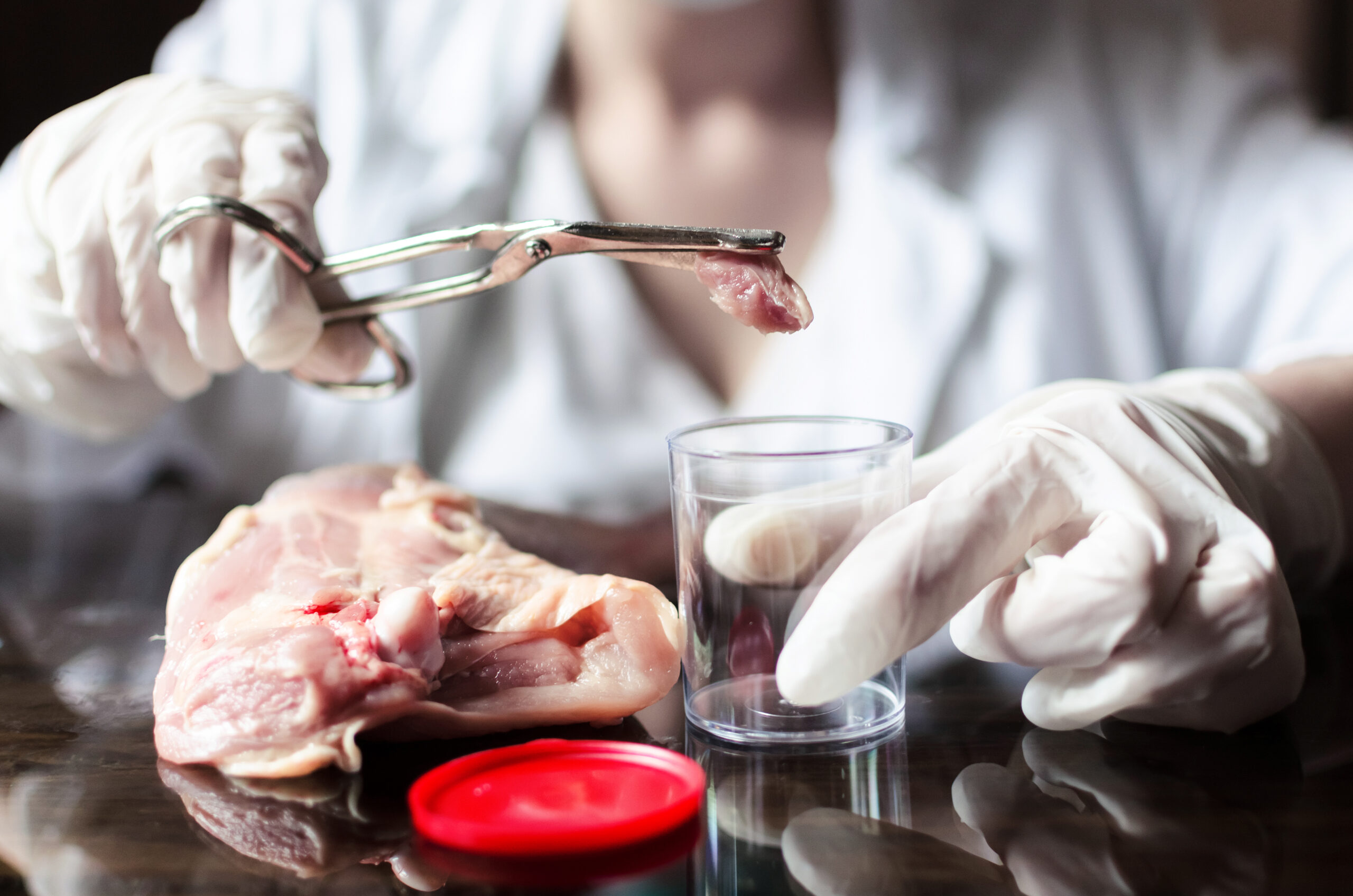The United States Department of Agriculture recently approved the sale of chicken meat created in a lab and made from animal cells by two companies based in California, UPSIDE Foods and GOOD Meat. This “lab-grown” meat is now making its way to select restaurant tables around the country and is expected to soon begin appearing on the chilled shelves of supermarkets. The immediate upshot? Well, the meat, referred to as “cultured” or “cell-cultivated” doesn’t require the slaughter of any animals and the new method is anticipated to drastically reduce the impact on the environment by eliminating the need for grazing, mitigating the disposal of animal waste and growing feed for animals.
“I’m very excited about this product and the tremendous impact it will have on the environment,” said Bill Delp, banquet chef with Levy Restaurants at the Baird Center in Milwaukee, Wisconsin. Delp says that a substantial amount of chicken is used annually at the event center and eliminating the need for farming livestock is a win-win for everyone. However, Delp voiced some concern saying that he would need to know more about the process and see the facility where cultured meat is produced but said “Any drawbacks are definitely overshadowed by the benefits for the planet.”
Where it Comes From
GOOD Meat, based in Alameda, California, believes that their lab-grown meat is not only safe to eat, but that it will revolutionize food production. “This announcement that we’re now able to produce and sell cultivated meat in the United States is a major moment for our company, the industry and the food system,” said Josh Tetrick, co-founder and CEO of GOOD Meat and Eat Just. “We have been the only company selling cultivated meat anywhere in the world since we launched in Singapore in 2020, and now it’s approved to sell to consumers in the world’s largest economy. We appreciate the rigor and thoughtfulness that both the FDA and USDA have applied during this historic two-agency regulatory process.”
Read More: Ravish: Veganlicious
What’s more, the process of cooking cultured meat doesn’t require the use of antibiotics and all cells used during the process are non-GMO chicken cells. The production environment, which resembles a beer brewery, uses chicken fibroblasts (a type of fibrous cellular material that supports and connects the structural frameworks of tissue) are used as the starting point for every production run. From there, the cells are fed amino acids, carbohydrates, minerals, fats and vitamins—the same nutrients a live animal would need to grow.
The process allows for only the parts of the chicken that will be eaten to be grown and even allows for the manipulation of what kind of chicken formats are formed by the end of the process, from crispy chicken bites to grilled fillets. This is accomplished by mixing cells with co-ingredients over the course of the process. Depending on the facility, the entire process takes roughly one month.
Good for You, Good for the Planet
UPSIDE Foods in Berkeley, California reports that several independent researchers have concluded that the production of cultivated meat reduces the amount of greenhouse gases produced by 90% when compared to conventional methods of agriculture. With the demand for meat expected to double by 2050, the drastic reduction in the amount of pollution emitted by producing cultured meat will not only aid in feeding the world population but will also provide a tremendous benefit to the environment.
Read More: Making a Tasteful Impression Through a Food and Beverage Program That’s a Cut Above
“At UPSIDE, we decided to reject the annual slaughter of billions of animals for food; to reject the degradation of our land and overuse of water; to reject the attitude that there isn’t a better way,” said UPSIDE CEO and Founder, Uma Valeti, M.D. “Instead, we chose to pursue a more sustainable and more humane future for animals, people and the planet.”
And the urgency of finding a more sustainable source of protein is growing by the minute as appetites across the world continue to grow. The earth’s population is expected to reach 8.6 billion by 2030—meaning that the required equivalent to satisfy our appetites would require exponentiating the amount of the Earth’s livestock and farmland to keep the planet satiated.
Cultured Meat to Hit the Mainstream
Cultured meat has yet to be served at restaurants in the United States, let alone events, but the arrival of lab-grown meat to a plate near you isn’t too far off. GOOD Meat currently sells its cell-cultivated meat at Huber’s Butchery in Singapore—where the product was first introduced.
However, both GOOD Meat and UPSIDE Foods have partnered with notable chefs including Michelin-Star chef Jose Andres, who joined GOOD Meats Board of Directors, pledging his commitment to the future of food sourcing.
“We need to innovate, to adapt our food to a planet in crisis. We need to create meals that feed the people at the same time as we sustain our communities and environment,” Andres said.
Similarly, UPSIDE has partnered with 3-Michelin-Star chef Dominique Crenn of San Francisco’s Bar Crenn, who is a proponent of sustainable food systems and has created a specialty dish highlighting the excellent quality of UPSIDE’s meat. Ongoing events at Bar Crenn featuring chicken produced by UPSIDE Foods.
This article appears in the July/August 2023 issue. You can subscribe to the magazine here.




